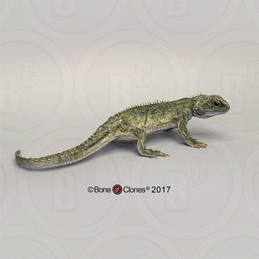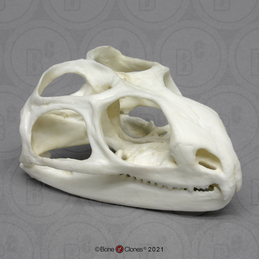-
Fields of Study
- K-12 Education
- Advanced Anatomy
- Forensics
- Physical Therapy
- Primate Locomotion
- Non-primate Locomotion
- Biological Anthropology
- Paleontology
- Bioarchaeology
- Marine-Aquarium
- Veterinary
-
Zoology
- All Zoological Items
- Endangered Species
- Skulls
- Skeletons
- Cranial Elements
- Postcranial Elements
- Eggs
- Limbs
- Teeth & Fangs
- Claws & Talons
- Brains & Endocasts
- Life Casts
- Pathology & Trauma
- Wildlife Forensics
- Sets
- Bird Sets
- Accessories
- Birds
- Mammals
- Reptiles & Amphibians
- Fish
- Sharks & Rays
- Turtles & Tortoises
- Anatomy for the Artist
- Decor
- Veterinary
- Elements
- Pathology & Trauma
-
Sets & Series
- Natural History Gift Ideas
- Decor
- Scale & Sculpture
- 3D Scanned & Printed
- Bone Boxes
- Locomotion Sets
- Forensic Sets
- Advanced Anatomy Sets
- Physical Therapy Series
- Fetal Sets
- Economy Series
- Zoology Sets
- Bird Sets
- Claw & Talon Sets
- Tooth & Fang Sets
- Primate Skull Sets
- Fossil Hominid Sets
- B.I.O.P.S.I. - Babiarz Institute
- Maxwell Collection
- Bergdorf Goodman Windows
- Accessories
- New Products
-
Our Company
- News & Specials
- Printable Handouts
- About Us
- Why Choose Bone Clones
- Bone Clones in the News
- Mission
- Contact Us
- Privacy and Security
- FAQs
- Testimonials
- Community Outreach
- Legal/Copyright
- Flyers
- Choosing Original Specimens
- Museum Exhibitions
- Natural History Gift Ideas
- About the Economy Series
- Acknowledgements
- Ordering & Delivery
- Warranty
- Refund/Return Policy
- Price List at a Glance
- Our Catalog
- Osteological Evaluation Reports
- About 3D Printing
- Sawyer & Maley Neanderthal Reconstruction
- Site Introduction
- Newsletter Archive
-
Human Anatomy
- All Human Anatomy
- Human Skulls
- Human Skeletons
- Head & Neck
- Postcranial Elements
- Advanced Anatomy
- Physical Therapy / Joints
- Human Brains & Endocast
- Human Life Casts
- Maxwell Museum
- Sets & Series
- Accessories
- Osteological Evaluation Reports
- Featured
- Adult Human Anatomy
- Adolescent Human Anatomy
- Child Human Anatomy
- Fetal Human Anatomy
-
Zoology
- All Zoological Items
- Endangered Species
- Skulls
- Skeletons
- Cranial Elements
- Postcranial Elements
- Eggs
- Limbs
- Teeth & Fangs
- Claws & Talons
- Brains & Endocasts
- Life Casts
- Pathology & Trauma
- Wildlife Forensics
- Sets
- Bird Sets
- Accessories
- Birds
- Mammals
- Reptiles & Amphibians
- Fish
- Sharks & Rays
- Turtles & Tortoises
- Fossil Hominids
- Paleontology
- Non-human Primates
- Forensics
Tuatara
The tuatara (native Maori, meaning “Spiny backed”) is a unique, small-to- medium sized reptile found only in parts of New Zealand, particularly several isolated islands. Although they superficially resemble lizards in overall shape (a common form), and in that both have scales and share the ability to lose and regenerate their tail tip, tuataras have several characteristics not found in snakes or lizards and are from a different evolutionary line. Tuataras are the only living representatives of the order Rhynchocephalia (“beak-headed”) with a lineage that stretches back to the Mezozoic. At one time this order included multiple species and genera in several families. Now, all other representatives of this order, save the tuatara, are extinct and only represented in the fossil record. The two sister-orders of reptiles (Squamata: snakes and lizards, and Rhynchocephalia: tuatara) are believed to have split from each other about 200 million years ago, and the tuatara has evolved little since then.
Tuatara are a long-lived species, averaging 80 years, with many living to 100. Because their ‘teeth’ are sharp boney protrusions which are fused to the skull and wear down with age, older, toothless, tuatara must eat soft foods. They are nocturnal carnivores, eating mostly insects, but also small birds, eggs and young tuatara, which are active during the day to avoid predation. Reproduction begins at around 20 years. Eggs develop over 1-4 years, and are deposited into a hole dug into the ground, hatching between 12-15 months later. Temperature during the eggs’ development determines the sex of the hatchling, with warmer weather producing males. Some genetic factors may also contribute to sex determination.
Some characteristic of tuatara are unique among species, while others are remarkable in their combination. Unlike lizards, tuataras prefer cool temperatures. They possess a primitive skull structure with unique dentition and fenestration (openings), a fixed upper jaw, a unique ‘third eye’ which is sensitive to light (although not able to form visual images), primitive hearing structure with no external ear openings (similar to turtles). Postcranial osteological features include hourglass vertebrae (common in fish, but not in reptiles), pelvic and shoulder girdle structure which differs from lizards, gastric ribs, and crocodilian-like plates on their tail. Their organs are structurally primitive, and their brain and method of locomotion resembles that of amphibians.
Tuatara are a long-lived species, averaging 80 years, with many living to 100. Because their ‘teeth’ are sharp boney protrusions which are fused to the skull and wear down with age, older, toothless, tuatara must eat soft foods. They are nocturnal carnivores, eating mostly insects, but also small birds, eggs and young tuatara, which are active during the day to avoid predation. Reproduction begins at around 20 years. Eggs develop over 1-4 years, and are deposited into a hole dug into the ground, hatching between 12-15 months later. Temperature during the eggs’ development determines the sex of the hatchling, with warmer weather producing males. Some genetic factors may also contribute to sex determination.
Some characteristic of tuatara are unique among species, while others are remarkable in their combination. Unlike lizards, tuataras prefer cool temperatures. They possess a primitive skull structure with unique dentition and fenestration (openings), a fixed upper jaw, a unique ‘third eye’ which is sensitive to light (although not able to form visual images), primitive hearing structure with no external ear openings (similar to turtles). Postcranial osteological features include hourglass vertebrae (common in fish, but not in reptiles), pelvic and shoulder girdle structure which differs from lizards, gastric ribs, and crocodilian-like plates on their tail. Their organs are structurally primitive, and their brain and method of locomotion resembles that of amphibians.
All items sold on this website are replicas; no real/natural bone is available on this site. Bone Clones® are 1:1 scale unless stated otherwise. All Bone Clones® products are made in the USA.

Tuatara (Life Cast)LC-271
$330.00
|

Tuatara SkullBC-028
$155.00
|
|||
Product Info
Newsletter Signup
Bone Clones
9200 Eton Ave.
Chatsworth, CA 91311 USA
9200 Eton Ave.
Chatsworth, CA 91311 USA
Except where indicated otherwise, all images and text
© 1992-2025 Bone Clones Holdings. All Rights Reserved.
© 1992-2025 Bone Clones Holdings. All Rights Reserved.
Customer Service
© 2025 BONE CLONES HOLDINGS / Made by MEV











